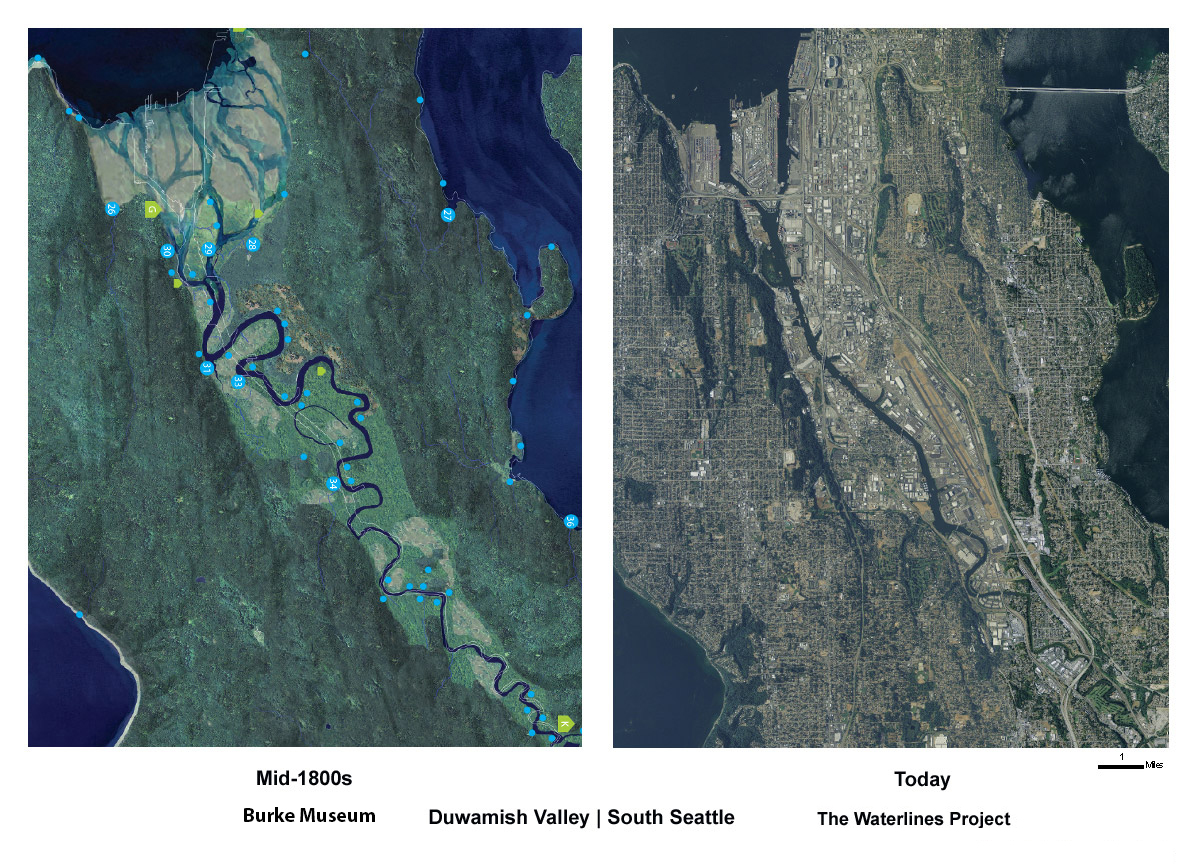- Can you tell us a little about your scientific background? What brought you to pursue your master’s in marine policy?
I was a research technician in a wetland ecology lab at the Estuary & Ocean Science Center, San Francisco State University’s satellite research campus for marine sciences. That’s where I became passionate about the power of restoration work to heal lands and connect people to their shorelines. I’m studying at the School of Marine and Environmental Affairs (SMEA) because I want to know how the science I do can be a tool for connecting people to their shorelines and empowering communities to take the lead in environmental stewardship.
- Can you describe your role within the Duwamish Floating Wetlands project?
I oversee field monitoring of the wetland plants that are growing on our Biobarges. Like all SMEA students involved in this project, I am also responsible for giving input into research design so that we can improve upon last year’s proof of concept work and come up with monitoring and data collection methodologies that are more robust.
- What draws you to this project working in a freshwater ecosystem, estuary and in an industrialized/urban context?
Estuaries and coasts are where people are, and they’re where I did most of my undergraduate research. Since my previous work has been in mainly coastal waters and less developed landscapes, I really wanted to get the chance not only to work in a riparian system but also in an urban setting where there are lots of people. I want to see how people who live in the area connect with the river, if at all, and what sort of role projects like ours can play in connecting communities with their environment.
- What is one of your favorite aspects of this project?
Just having the chance to be out on the river and in very unique nearshore spaces is my favorite thing! Working with fellow SMEA students and with Ashley, our community science coordinator, has also been very meaningful and wonderful.
- Why are these places important to you personally?
The Lower Duwamish resonates with me because the work we are doing in it reminds me of my home town in California. Back home, wetlands, their restoration, and their role in our city’s future is a major point of contention, and the way you view wetlands in our city is a window into your values and priorities. The creek that used to be the heart of our city is mostly paved over and in dire need of daylighting. Like the Duwamish, it’s a survivor of White settlement and urbanization. I’m always dreaming of ways to daylight that creek and radically transform the heart of my hometown, so novel restoration techniques speak to me on a personal level.
- Do you have a dream role for yourself at the end of your University of Washington’s School of Marine and Environmental Affairs graduate experience?
That’s a tough question! It doesn’t really matter if it’s in a research lab or a non-profit or in the private sector, so long as it’s somewhere in a position where I can use my knowledge, training, and privilege to serve the public and to foster connections that allow both people and their environments to transform and heal.
